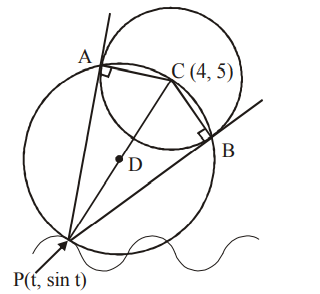Q.
Tangents $PA$ and $PB$ are drawn to the circle $( x -4)^{2}+$ $(y-5)^{2}=4$ from the point $P$ on the curve $y=\sin x$ where $A$ and $B$ lie on the circle. Consider the function $y=f(x)$ represented by the locus of the centre of the circumcircle of triangle $PAB$. Then answer the following questions.
The period of $y = f ( x )$ is
Conic Sections
Solution:
